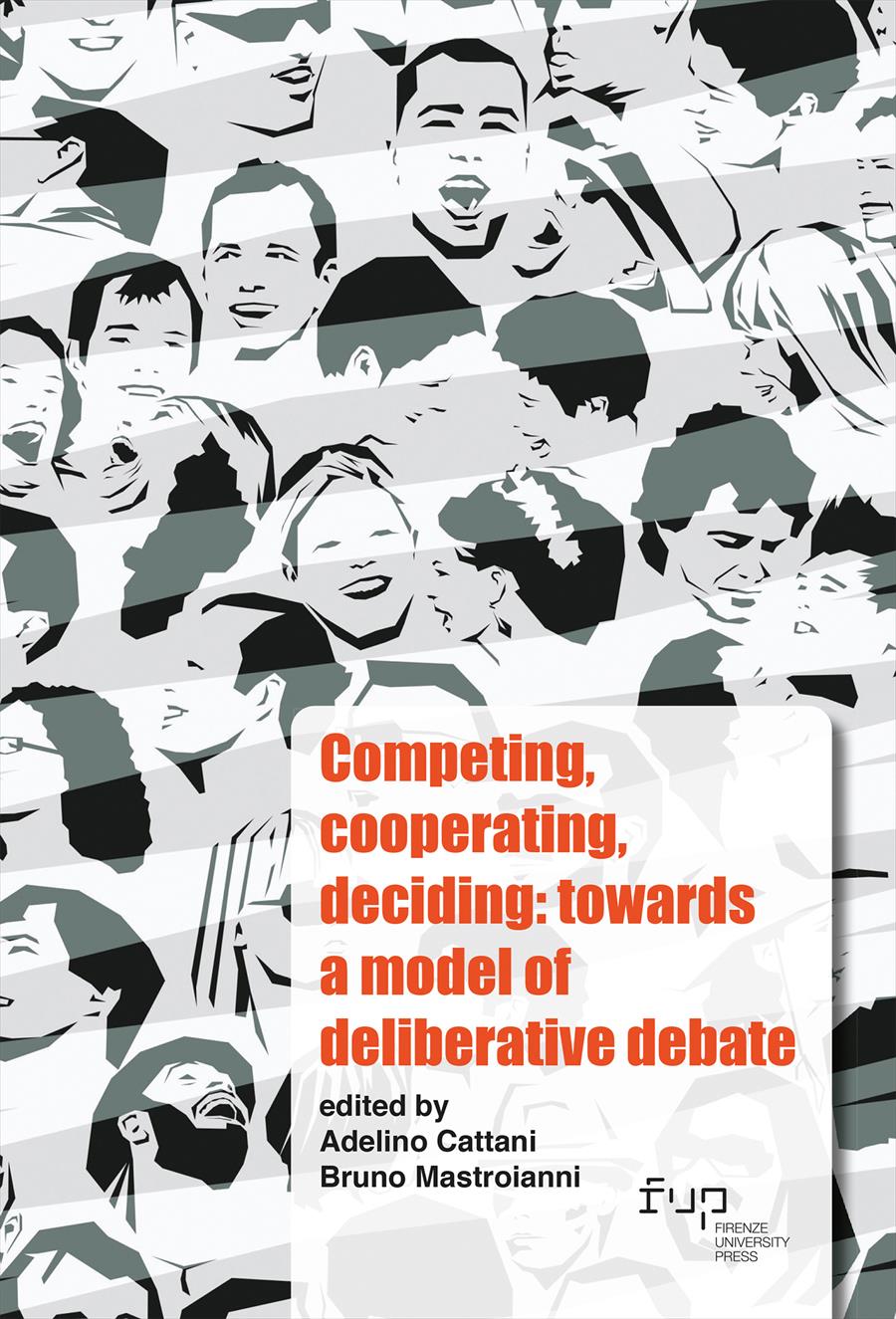- Competing, cooperating, deciding: towards a model of deliberative debate
- Edited by Adelino Cattani, Bruno Mastroianni
A Rhetorical Model of Debating
- Stephen M. Llano
- © 2021 Author(s) |
- CC BY 4.0
- DOI: 10.36253/978-88-5518-329-1.05
A rhetorical model of the debate centered on the image of a labyrinth is more suitable than the metaphor of debate-as-game in describing the benefits of arguing in front of an audience. The labyrinth best expresses that proceeding by successive choices, coming and going, and sometimes retracing one's steps, typical of the debate activity. The basic thesis is that arguing is a continuous adaptation of one's speeches according to the audience that listens. In fact, in the labyrinth, what matters is not only arriving at the outcome - the exit or reaching the center of the structure - but the path you choose to get there is equally important. More than the definitive and winning argument, which rarely occurs in discussions, the labyrinth teaches us to recognise the plurality of approaches adopted when faced with an issue.
- Keywords:
- Argumentation Theory,
- debate,
- rhetoric,
St. John’s University, United States
- Bitzer, L. F. 1968. “The Rhetorical Situation.” Philosophy & Rhetoric 1: 1-14.
- Burke, K. 1969. A Grammar of Motives. Berkeley and Los Angeles: University of California Press.
- Ehninger, D., and W. Brockriede (1971). Decision by debate (1st Ed). New York: Harper & Row.
- Keith, W. M. 2007. Democracy as Discussion: Civic Education and the American Forum Movement. Lanham, MD: Lexington Books.
- Mercier, H., and D. Sperber. 2017. The Enigma of Reason. Cambridge-Massachusetts: Harvard University Press.
- O’Neill, J. M. 1915a. “A Disconcerted Editor and Others.” Quarterly Journal of Public Speaking 1(1): 79-84.
- O’Neill, J. M. 1915b. “Able Non-Debaters.” Quarterly Journal of Public Speaking 2(1): 197-207.
- Potter, D. 1944. Debating in the Colonial Chartered Colleges. New York: Teacher’s College of Columbia University.
- Poulakos, J. 1995. Sophistical Rhetoric in Classical Greece. SC: University of South Carolina Press Columbia.
- Ranciere, J. 1991. The Ignorant Schoolmaster. CA: Stanford University Press, Stanford.
- Ray, A. G. 2004. “The Permeable Public: Rituals of Citizenship in Antebellum Men’s Debating Clubs.” Argumentation & Advocacy 41(1): 1-16.
- Sprague, R. K. 1972. The Older Sophists. Inc, Indianapolis: Hackett Publishing Co.
- Tannen, D. 1998. The Argument Culture: Stopping America’s War of Words. New York: Ballantine Books.
- Vatz, R. E. 1973. “The Myth of the Rhetorical Situation.” Philosophy & Rhetoric 3(6): 154-61.
- Walker, J. 2011. The Genuine Teachers of This Art: Rhetorical Education in Antiquity. Columbia: University of South Carolina Press.
Chapter Information
Chapter Title
A Rhetorical Model of Debating
Authors
Stephen M. Llano
Language
English
DOI
10.36253/978-88-5518-329-1.05
Peer Reviewed
Publication Year
2021
Copyright Information
© 2021 Author(s)
Content License
Metadata License
Bibliographic Information
Book Title
Competing, cooperating, deciding: towards a model of deliberative debate
Editors
Adelino Cattani, Bruno Mastroianni
Peer Reviewed
Number of Pages
168
Publication Year
2021
Copyright Information
© 2021 Author(s)
Content License
Metadata License
Publisher Name
Firenze University Press
DOI
10.36253/978-88-5518-329-1
ISBN Print
978-88-5518-328-4
eISBN (pdf)
978-88-5518-329-1
Series Title
Communication and Philosophical Cultures. Researches and Instruments
Series ISSN
2975-1152
Series E-ISSN
2975-1233
